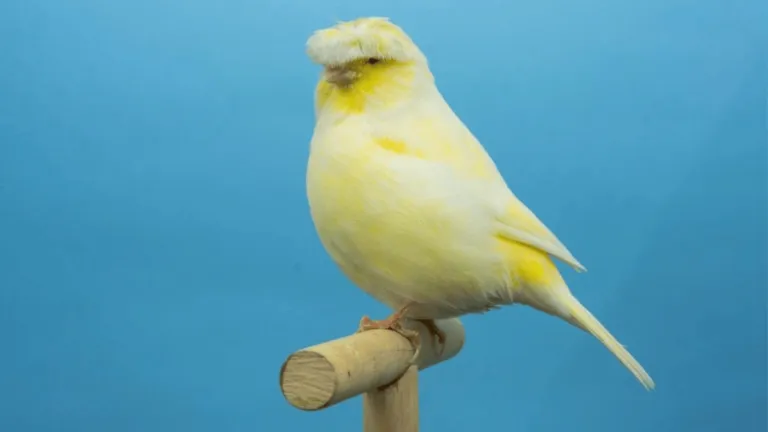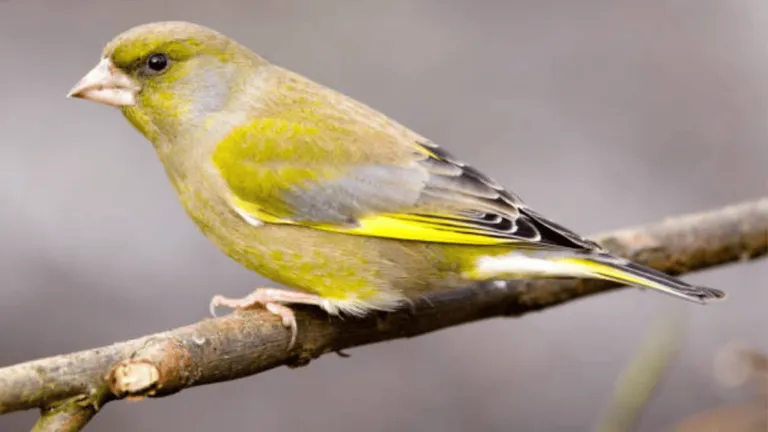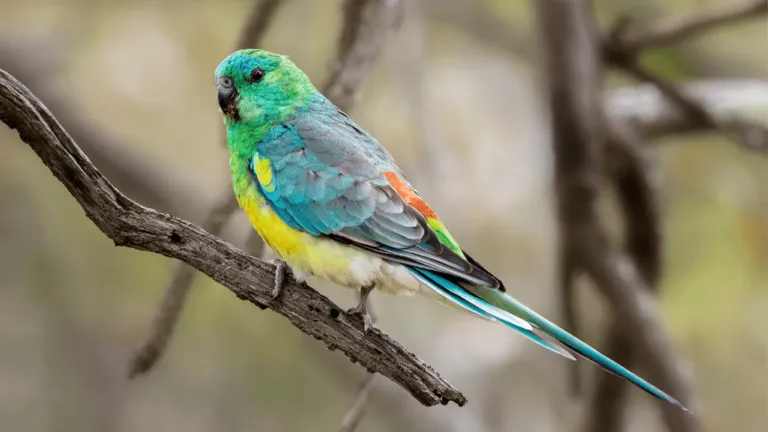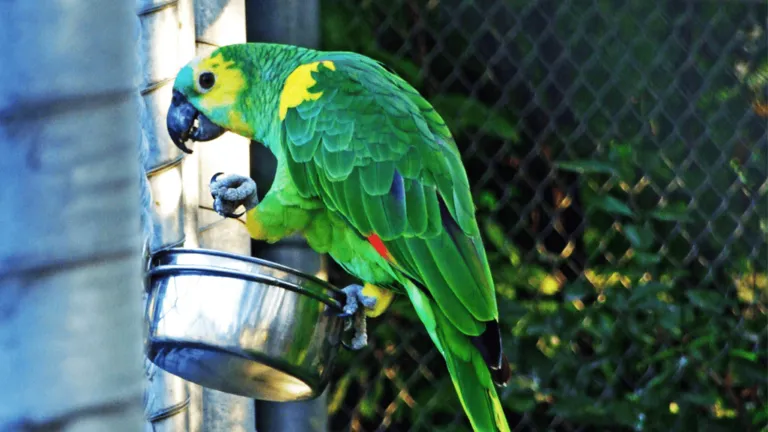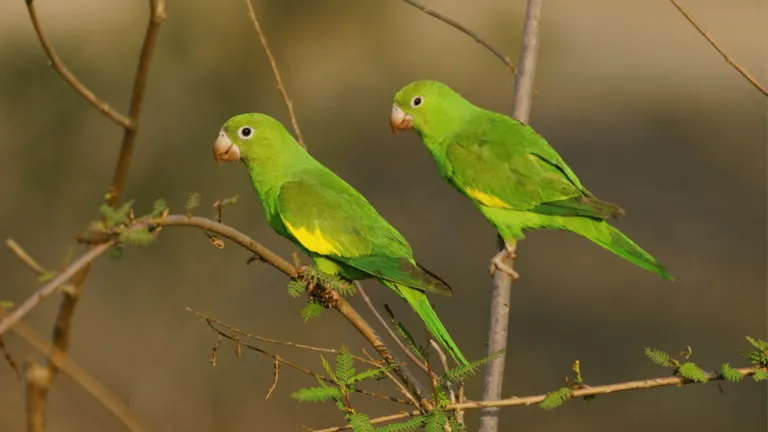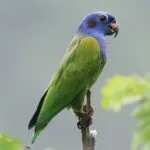For those who love birds, the Zebra Dove is a fascinating subject. These birds stand out with their unique look and social ways. They are found from Southeast Asia to places like Hawaii, showing how adaptable they are. Learning about Zebra Dove care is key for keeping them healthy, whether in homes or in the wild. These birds are found all over but still face challenges from humans.
Key Takeaways
- Zebra doves are small but can have many babies each year.
- They have thrived in Hawaii since the 1920s, becoming common on many islands.
- In Hawaii, they help spread avian malaria, affecting local ecosystems.
- Keeping Zebra Doves healthy means providing the right food, light, and temperature.
- Make sure their homes are big and safe, without rough surfaces on their perches.
- These birds like to live in pairs or small groups, especially where food and water are plentiful.
Discovering the Zebra Dove: Characteristics and Appearance
The Zebra Dove is known for its unique and beautiful look. It’s a favorite among bird lovers and experts. Found in Southeast Asia and spread by humans to other parts of the world, these birds show a special beauty that catches the eye.
Identification of the Zebra Dove
Identifying a Zebra Dove is easy with its white and black stripes around the neck and sides. It has a soft greyish blue face with a light blue line near the eyes. This makes it stand out in the wild or in the Columbidae family.
Physical Features and Color Patterns
Zebra Doves have a striking look with a cinnamon breast and a unique barring pattern. They also have a blue bill and pink legs, adding to their elegance.
Size Comparisons with Similar Species
Compared to the big Rock Pigeon, the Zebra Dove is slender and elegant. It’s about 20 to 23 cm (8 to 9 inches) long and weighs 40 to 60 grams (1.4 to 2.1 ounces). This size makes it agile and helps it survive in the wild.
| Feature | Description |
|---|---|
| Size | 20 to 23 cm in length (8 to 9 inches) |
| Weight | 40 to 60 grams (1.4 to 2.1 ounces) |
| Lifespan | 5 to 10 years in the wild |
| Diet | Primarily seeds and grains, occasional small insects |
| Predators | Birds of prey, cats, and dogs |
| Conservation Status | Least Concern (IUCN Red List) |
Learning about Zebra Dove characteristics helps us understand and protect these beautiful birds. They live in different places, keeping their place in the bird world.
Native Habitats and Global Distribution
The Zebra Dove is very adaptable, living in many different places. This helps us understand where they live and how they spread out.
Zebra Dove’s Native Range in Southeast Asia
Zebra Doves come from Southeast Asia. They live in southern Thailand, Java, and Sumatra in Indonesia. They do well here because they eat a variety of foods and breed often.
Introduction and Adaptation in Hawaii
In 1922, Zebra Doves were brought to Hawaii. They quickly made Hawaii their home, showing they can live outside their original area.
Expanding Territories: Other Areas of Settlement
Zebra Doves have also made homes in Tahiti, New Caledonia, Mauritius, and other places. They fit into different ecosystems well, showing how adaptable they are.
| Location | Native/Introduced | Notable Features |
|---|---|---|
| Thailand, Malaysia, Indonesia | Native | Abundant, prefers parks and farmlands |
| Hawaii | Introduced | Established in forested regions |
| Tahiti, New Caledonia | Introduced | Adapted to small island ecosystems |
The Zebra Dove Diet: Feeding Habits and Preferences
Learning about the Zebra Dove diet and feeding habits shows how they survive in different places. They mainly eat seeds, which is a big part of their diet. These birds live off small seeds found in open areas and gardens. They are great at finding food on the ground, carefully picking seeds.
But, they don’t just eat seeds. They also eat insects, which gives them protein, especially when they’re breeding or feeding their babies. In places like Hawaii, they even eat food left out by people. This helps them live well in cities.
- Primary Food: Small seeds from thorn scrub, roadsides, and gardens
- Secondary Sources: Insects, and occasionally human-provided foods in urbanized areas
- Feeding Style: Ground foraging
Zebra Doves can live in many places, from their home in Southern Thailand and Malaysia to places like Hawaii and the Seychelles. In captivity, they need a diet that matches their love for seeds. This keeps them healthy and happy.
If you have these birds at home, give them a mix like Abba 1900 finch mix to help them switch to solid food. Seeds should be the main food, but make sure they don’t eat too much fat. It’s important to know what Zebra Dove’s dietary needs are to keep them healthy.
Nesting and Breeding Behaviors of Zebra Doves
The Zebra Dove has won the hearts of bird lovers worldwide with its unique cooing and elegant look. Let’s dive into how these birds nest and breed. Their simple yet effective nesting habits are key to their success in many different places.
Nesting Sites: Selection and Construction
Zebra Doves pick hidden spots for their nests. They look for places safe from predators and bad weather. Often, they choose forks in tree branches, building simple nests with twigs and leaves. This simple nest is strong enough for laying eggs and keeping them warm during incubation.
The Breeding Cycle: Egg Laying to Fledging
Zebra Doves breed quickly, raising many broods in a year. After making their nest, the female lays one to two white eggs. Both parents take turns keeping the eggs warm for 13 to 18 days. The chicks grow fast, leaving the nest in about two to three weeks, showing how well the parents care for them.
Parental Roles: Sharing the Caring Responsibilities
Both male and female Zebra Doves are key in raising their young. They feed the chicks with crop milk, a special food from their stomachs. This teamwork helps the chicks grow fast and strong.
Zebra Doves are resilient and adaptable in breeding and nesting. They thrive in Southeast Asia, even with challenges like being trapped for pets. They are listed as ‘Least Concern’ by the IUCN. Studies on their chicks and growth offer deep insights into their life.
| Characteristic | Details |
|---|---|
| Length | 20-22 cm |
| Weight | Approx. 72 g |
| Wingspan | 24-26 cm |
| Clutch Size | 1-2 eggs |
| Broods per Year | Up to 5 |
Learning about Zebra Dove nesting and breeding helps us appreciate these birds more. It also encourages us to work harder to protect them.
Zebra Dove Behavior and Social Dynamics
Zebra Doves are known for their calm nature. They show a wide range of social behaviors and interactions. These behaviors are key to understanding avian dynamics. They live peacefully with other birds like pigeons, showing how they share resources without conflict.
Zebra Dove behavior shows how they adjust to being around humans. This makes them popular with bird lovers. In cities, they show how wildlife and humans can live together. Their gentle ways help them survive and spread out in different places.
Zebra Doves are not just quiet birds; they play an active role in their social groups. They form close-knit flocks that look out for each other. This helps them stay safe and find food better in open areas.
Studies like those by Baumann-Pickering et al. (2015) show how Zebra Doves change their ways to stay connected even with noise around. This shows how complex their social lives are. It also shows why keeping these social bonds is important for their survival.
For those who love birds, learning more about avian dynamics and care is interesting. You can read more about the Green Singer Finch here. It talks about how different bird species are similar and unique.
In summary, knowing about Zebra Dove behavior and social interactions is key for bird lovers and conservationists. Their skill in adapting to their social and natural worlds shows how complex and interesting they are. This makes them a great topic for both science and casual interest.
Understanding the Zebra Dove
The Zebra Dove is known for its gentle nature and unique markings. It plays a key role in both nature and human culture. Found mainly in urban areas of Southeast Asia and the Pacific, these doves have adapted well to living near humans. They are a common sight in many big cities.
Understanding the Zebra Dove Call
The Zebra Dove call is a soft, rhythmic coo. It’s not just a way to communicate. It’s crucial for bird communication, especially during mating and to mark territory. The tone and frequency of their calls can mean different things, showing how complex their communication is.
Interactions with Other Bird Species
Zebra Doves are very peaceful and often live with other birds. They blend into different bird groups without upsetting the balance of nature. This shows how they can adapt and thrive in various places, which helps them survive and spread out.
Unique Feather Maintenance: Powder Down Feathers
The Zebra Dove has a special way to keep its feathers clean. They have ‘powder down’ feathers that turn into a fine powder. This powder helps clean and condition their feathers. It’s vital for their health and keeps their feathers perfect for flying and staying warm.
| Feature | Description | Significance |
|---|---|---|
| Zebra Dove Call | Soft, rhythmic coos | Essential for communication and mating rituals |
| Interaction | Coexists peacefully with other bird species | Indicative of high social adaptability |
| Feather Maintenance | Powder down feathers that turn into cleaning powder | Keeps feathers clean and functional |
This dove, with its soothing sounds and calm nature, adds beauty to its home and cities. From their Zebra Dove call to how they keep their feathers clean, these birds show how to survive and adapt.
Caring for a Zebra Dove:
Looking after Zebra Doves is key, whether they’re pets or hold cultural value in places like Thailand. We’ll explore the best aviary setup, important dove health tips, and what they need to eat to stay healthy.
Creating the Ideal Environment: Cage and Aviary Tips
First, a great aviary setup is crucial for Zebra Doves. They need a big cage or aviary for flying and are active. They also like to walk on the ground, so there should be enough space for that. The setup should copy their natural home with places to perch, plants, and quiet spots for nests. Keeping them safe from predators and bad weather is also key.
Common Health Concerns and Preventative Measures
When talking about dove health, regular vet visits are a must to catch diseases early, like avian malaria. Keeping their home clean, feeding them right, and watching for illness signs helps too. Catching health problems early can make a big difference in their life.
Dietary Needs and Nutrition
Zebra Doves need a diet similar to what they eat in the wild. Mainly, they should eat high-quality dove food, with some millet, and fresh fruits and greens for extra nutrients. This diet keeps them healthy in body and mind.
Zebra Doves at different ages have different food needs. Young nestlings need to be fed often, changing as they grow. Knowing these needs is important for Zebra Dove care.
In conclusion, setting up the right environment and keeping an eye on their health and diet are key. With the right knowledge and effort, these gentle birds can thrive with us.
Zebra Dove Conservation Status and Human Impact
The Zebra Dove is found all over the world and is not yet considered endangered. But, they face challenges, especially in bird conservation efforts. Humans harm them by trapping for the pet trade, showing we need to watch over these birds closely.
We must find a balance in how we appreciate and use Zebra Doves. They can live in new places like Hawaii, but this brings new problems. These include city life and diseases like Cryptococcus neoformans, which they can carry.
| Issue | Impact |
|---|---|
| Trapping for pet trade | Decreases wild populations, disrupts natural behaviors |
| Urbanization | Loss of natural habitats, increased human-bird conflict |
| Disease transmission | Potential zoonotic risks to humans and other species |
Other human actions also affect Zebra Doves. For example, noise pollution changes their cooing. This shows how resilient they are but also how stressed they can get, which might hurt their health and ability to have babies.
Zebra Doves are not endangered yet, but they need our help to stay safe. We must keep working on conservation efforts and reduce human impacts. By getting communities involved in bird conservation, we can help Zebra Doves and other birds live in harmony with us.
Fun Facts About Zebra Doves That Bird Lovers Should Know
Zebra Doves offer a fascinating look into the world of birds. They are not just common birds but also loved by bird fans all over the world. Let’s explore some interesting facts about Zebra Doves.
Zebra Doves were brought to the Hawaiian island of Kauai in the early 1950s. They quickly made themselves at home and became a common sight. People love them for their soft cooing and calm nature.
These birds stand about 8 inches tall and have a unique look. They have soft grey feathers with black-and-white stripes, like a zebra. This makes them stand out and easy to spot.
- Their home is in Southeast Asia and nearby areas. They like open spaces and cities, showing how adaptable they are.
- Zebra Doves eat a mix of seeds, nuts, fruits, and small bugs. This is typical for doves.
- They are adaptable and can live with humans, which is why they’re popular in bird keeping around the world.
Zebra Doves are not just pretty and quiet. They are also interesting to watch because of their social and breeding habits. Both parents take care of their babies, which makes them special to bird lovers and scientists.
In conclusion, Zebra Doves are admired for their gentle nature, unique look, and ability to live in different places. Whether in the wild or as pets, they capture the hearts of many.
Conclusion
The Zebra Dove is a stunning bird, loved for its looks and easy care. It fits well in both wild and home settings, showing grace and calm. For those who love birds, Zebra Dove care means knowing about their food, home, and social life. It also means helping protect them and keeping humans from harming their numbers.
A story about a Zebra Dove found injured at a school caught everyone’s attention. It showed how important it is to help sick or hurt animals fast. Studies on Zebra Dove care have taught us a lot about keeping them healthy, like how to deal with parasites.
Research shows that taking good care of doves and farms can lower the risk of parasites. In Thailand, from January to April 2021, improving how we manage doves cut down on parasites. This shows how our actions affect their health.
Understanding their love lives is also key to responsible bird ownership. A study looked into how males and females choose each other. This helps us care for doves better and protect them for the future.
In the end, learning about Zebra Dove care helps us be better owners. It ensures these birds can live well in the wild and with us. Their happiness and the joy they bring depend on our caring and informed actions.






